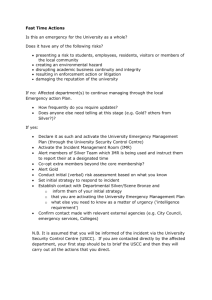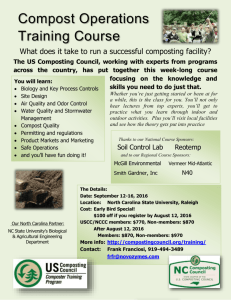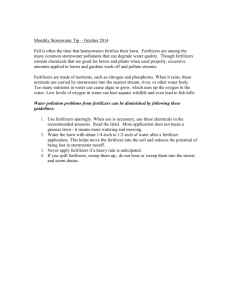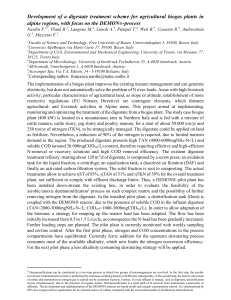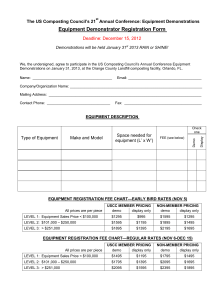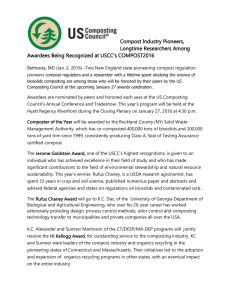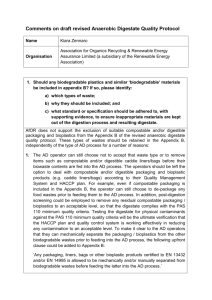August, 2011
advertisement
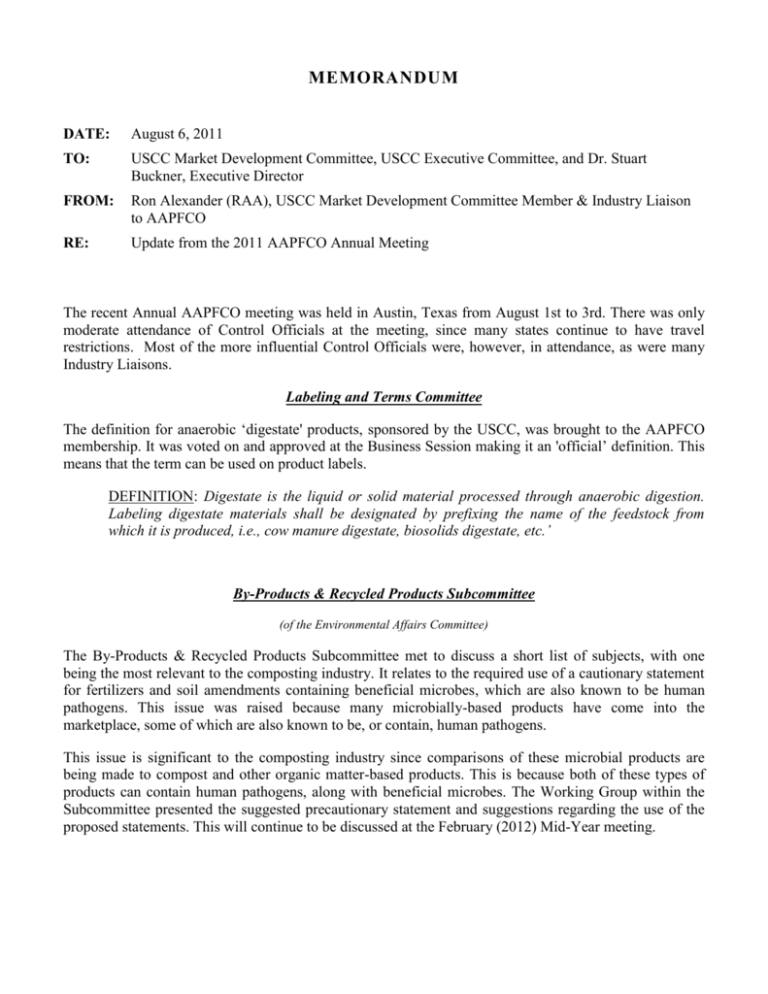
MEMORANDUM DATE: August 6, 2011 TO: USCC Market Development Committee, USCC Executive Committee, and Dr. Stuart Buckner, Executive Director FROM: Ron Alexander (RAA), USCC Market Development Committee Member & Industry Liaison to AAPFCO RE: Update from the 2011 AAPFCO Annual Meeting The recent Annual AAPFCO meeting was held in Austin, Texas from August 1st to 3rd. There was only moderate attendance of Control Officials at the meeting, since many states continue to have travel restrictions. Most of the more influential Control Officials were, however, in attendance, as were many Industry Liaisons. Labeling and Terms Committee The definition for anaerobic ‘digestate' products, sponsored by the USCC, was brought to the AAPFCO membership. It was voted on and approved at the Business Session making it an 'official’ definition. This means that the term can be used on product labels. DEFINITION: Digestate is the liquid or solid material processed through anaerobic digestion. Labeling digestate materials shall be designated by prefixing the name of the feedstock from which it is produced, i.e., cow manure digestate, biosolids digestate, etc.’ By-Products & Recycled Products Subcommittee (of the Environmental Affairs Committee) The By-Products & Recycled Products Subcommittee met to discuss a short list of subjects, with one being the most relevant to the composting industry. It relates to the required use of a cautionary statement for fertilizers and soil amendments containing beneficial microbes, which are also known to be human pathogens. This issue was raised because many microbially-based products have come into the marketplace, some of which are also known to be, or contain, human pathogens. This issue is significant to the composting industry since comparisons of these microbial products are being made to compost and other organic matter-based products. This is because both of these types of products can contain human pathogens, along with beneficial microbes. The Working Group within the Subcommittee presented the suggested precautionary statement and suggestions regarding the use of the proposed statements. This will continue to be discussed at the February (2012) Mid-Year meeting. Precautionary Statement Usage Suggestions: The following language is intended for any product labels that are claiming microorganisms. For Fertilizers & Soil Amendments: Step 1: Determine if a labeled organism is included within the Risk Group Level 2 microorganisms as classified for the United States by a US health agency and as recognized by the NIH 2002 category of the American Biological Safety Association’s (ABSA) website (http://www.absa.org/riskgroups/index.html). Step 2: Identify the “use context”, as defined by the application rate and approach (i.e., 2 gallons per acre broadcasted) and organism concentration (i.e. Bacillus cereus at concentration of 1x10 6 cfu/ml) of a product shall be the next evaluation needed to be determined before a precautionary statement is needed (or step 3). (This was brought to us by Dr. Madey during the Aug, 2010 presentation) Step 3: Then a precautionary statement shall be required on all labels as such: "Avoid contact with eyes and skin. Wear eye and skin protection when handling this product. Persons with a compromised immune system should consult their physician before handling." Addendum: In addition to those species listed on the reference site as Risk Group Level 2 an Addendum shall be put in place with the following species of concern that are not currently classified as Level 2 with NIH (noted by Don Wolf, OR): Bacillus cereus (listed by 6 of 9 as Level 2, but not NIH) Enterococcus faecium (listed by 3 of 9 as Level 2, but not NIH) The following were also suggested as Risk Group Level 2 via Oregon and Switzerland: Burkholderia multivorans Pseudomonas alcaligenes The most important item to point out is that we don't get lost in just reviewing a list then the need for the Precautionary Statement. The evaluative steps that Dr. Madey described "Exposure Assessment" and "Risk Characterization" must not be overlooked. Once those 2 items are determined then we move to the "Risk Mitigation" step or (precautionary statement). Uniform Bills Committee The Uniform Bills Committee met to discuss a variety of subjects, with two being of relevance to the composting industry. First, pertaining to SUIP 25 – Metals in Fertilizers, in which the USCC was involved in developing. The SUIP (Statement of Uniform Interpretation and Policy) creates heavy metal limits for Phosphate and micro-nutrient fertilizers, and in some states it is used to regulate all fertilizer products. SUIP 25 has been in existence for several years. It was suggested that this should be placed in the Rules & Regulations Section of the Uniform State Fertilizer Bill, and pertain to all fertilizer products. The Committee agreed 2 with this suggestion, after much discussion. Also, a Working Group was put together to modify the SUIP language to made it suitable to fit in the Uniform Bill. A USCC representative is involved in this Working Group. Keep in mind that compost, manure and biosolids products are exempt from the SUIP, even if the products are labeled as fertilizers. This exemption has been retained thus far in the draft Bill language. This Working Group was inactive again between the last two AAPFCO meetings. Secondly, the issue of allowing Biosolids and Organic Fertilizers to make Phosphorous claims for both Total Phosphorous and the P2O5 form was brought up. This issue was dropped after the organization proposing this allowance could not be located. __________________________________________________________ The AAPFCO 2012 Mid-Year meeting is scheduled for February in San Antonio, Texas. 3
